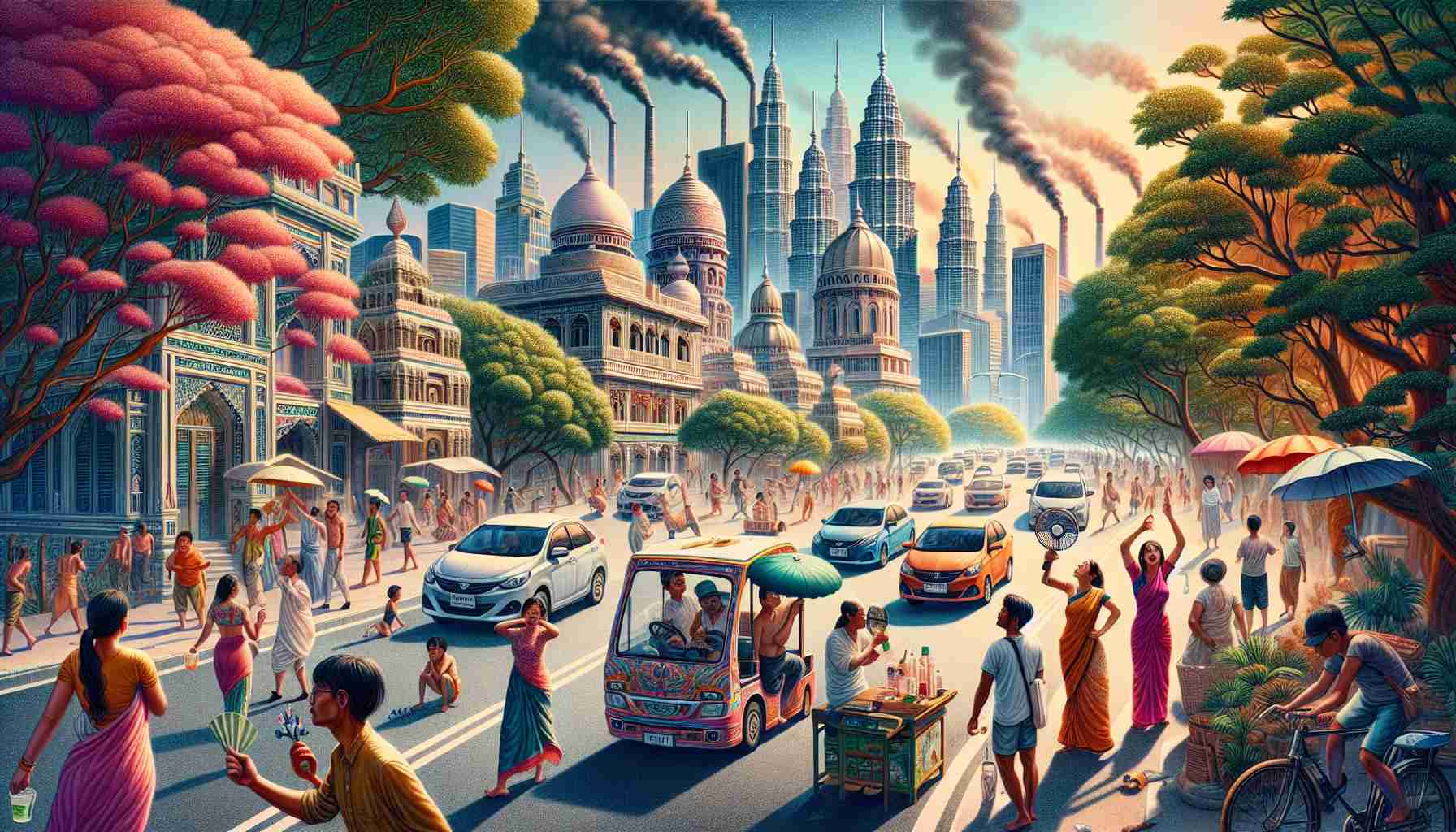The sweltering heatwave of April has set numerous temperature records across various Asian nations, including India, Thailand, and the Philippines, marking a stark reminder of the critical challenges posed by global climate change. As the populace grapples with the extensive heat, daily life becomes stifled; in the Philippines, for instance, the relentless temperatures have forced schools to shut down, while the surged demand for electricity presents new energy shortages.
In a distinctive artistic reaction to the blistering heat, an Indian Instagram user named Sahid SK, renowned for his AI technology-enhanced visuals, has shared a series of images that serve as a metaphorical reflection of a “summer in a parallel universe.” These creations, borne out of the relentless climate, depict imaginative solutions to counter the oppressive heat: helmets made entirely of ice and portable air conditioners capture the collective longing for cooldown.
One particularly engaging creation is a helmet made from ice, envisioned as a personal cooling sanctuary. Another is a fan of such magnitude that it promises to dispel the scorching air, teasing the fantasy that oversized appliances could be the antidote to heatwaves. There are also depictions of umbrellas equipped with fans, an ingenuity that walks the line between the practical and fanciful. Despite their clear foray into the realm of the imaginative, these images stir excitement and amusement among viewers, who applaud the creativity behind them.
Climate Change and Heatwaves
Heatwaves are becoming more intense and frequent due to climate change. The increasing global temperatures, caused predominantly by human activity such as burning fossil fuels, deforestation, and industrial processes, are contributing to episodes of extreme heat. This is particularly impactful in densely populated areas of Asia where infrastructure and energy systems may not always be equipped to handle such extremes, leading to power outages and health risks.
Impact on Health and Agriculture
Heatwaves pose significant health risks, including heat exhaustion, heatstroke, and worsening of chronic diseases due to overexertion and the physiological stress induced by high temperatures. Additionally, these heat conditions can lead to poor agricultural yields, affecting food security. For many Asian countries heavily reliant on agriculture, this represents a serious economic and social challenge.
Energy Consumption
The demand for electricity typically spikes during heatwaves because of increased use of air conditioning and refrigeration. In nations where the energy infrastructure is already under strain, this can lead to widespread power outages, further exacerbating the situation for residents.
Creative Responses and Public Engagement
Sahid SK’s artwork, while imaginative, underscores the public’s desire for relief and brings attention to the broader issue of climate change. Such expressions can spark discussions on practical solutions and raise awareness while providing some psychological respite through humor and creativity.
Adaptation and Mitigation
Adaptation to heatwaves involves improving infrastructure, such as energy systems and building design, and developing cooling centers for vulnerable populations. Mitigation efforts would require reducing greenhouse gas emissions through the adoption of renewable energies, enhancing energy efficiency, and changing consumption patterns.
Advantages and Disadvantages
Advantages:
– Heatwaves can prompt innovative thinking and accelerate technological advancements in cooling and sustainable energy.
– Increased public awareness can lead to stronger support for policies aimed at combating climate change.
Disadvantages:
– There are substantial economic costs associated with adapting to and mitigating the effects of heatwaves, which can be especially burdensome for developing countries.
– Heatwaves can lead to significant health risks, power outages, reduced agricultural productivity, and other socio-economic challenges.
As climate change continues to impact global weather patterns, initiatives that encourage discussion and adaptation are crucial. Understanding the complexities of global warming and its effects on regions like Asia can help in formulating both immediate and long-term strategies to combat its adverse effects. For further reading on climate change and global impacts, here are some related links (provided I am certain of their validity):
– Intergovernmental Panel on Climate Change (IPCC)
– United Nations Climate Change
– World Health Organization (WHO) – Climate Change
– World Meteorological Organization (WMO)

